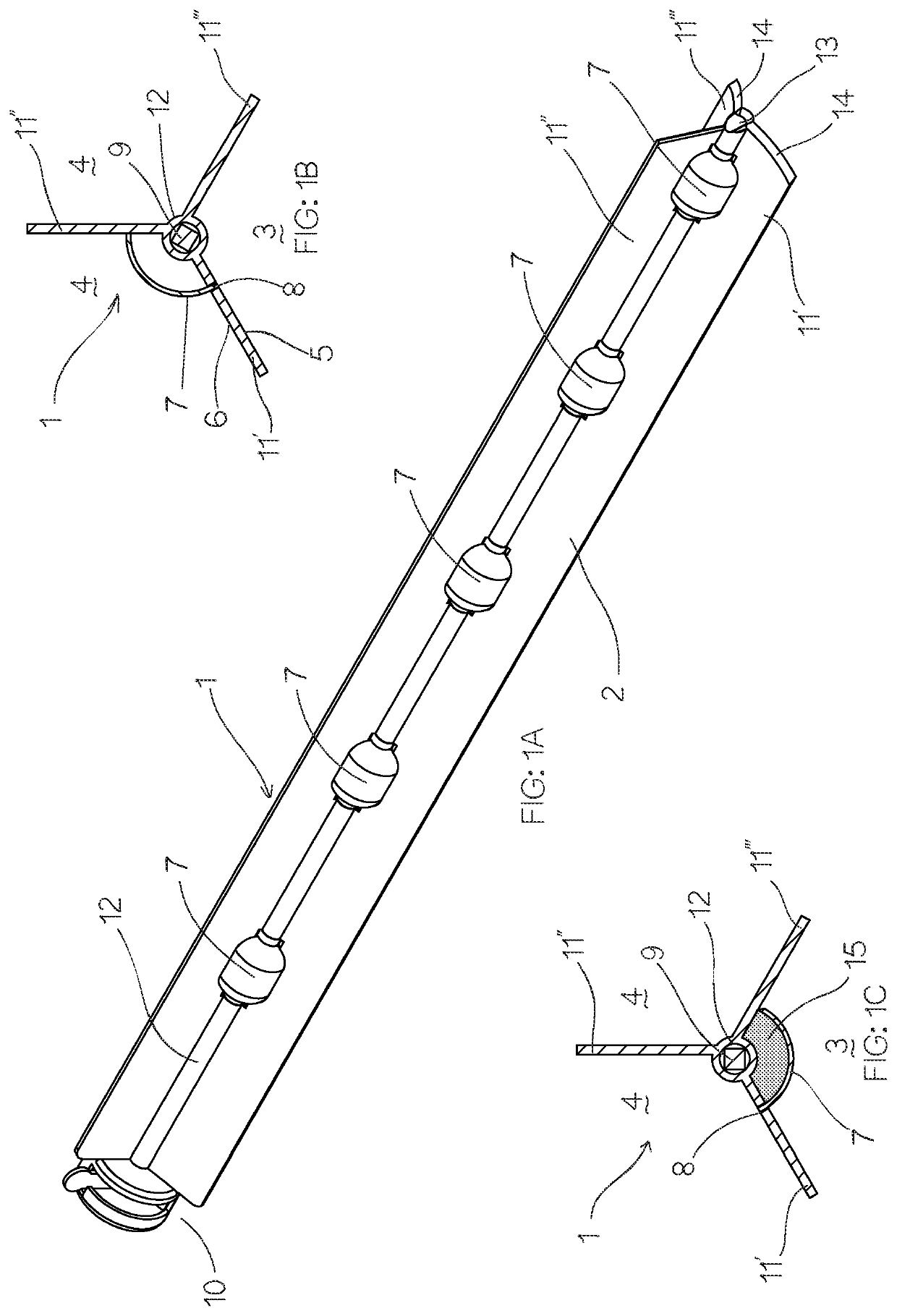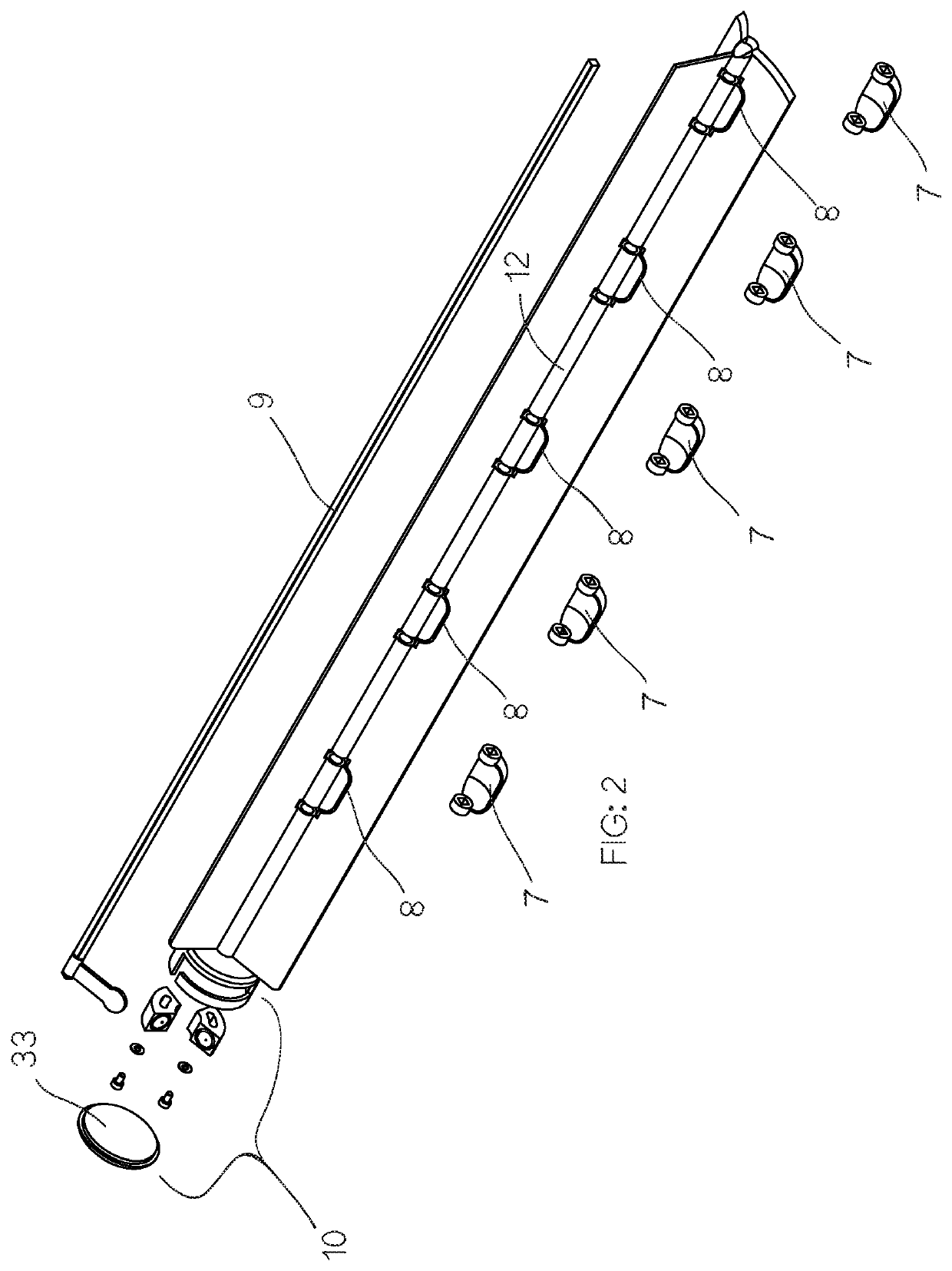Sampling Device
- Summary
- Abstract
- Description
- Claims
- Application Information
AI Technical Summary
Benefits of technology
Problems solved by technology
Method used
Image
Examples
Embodiment Construction
[0123]Referring initially to FIGS. 1A to 1C, the invention provides a sampling device 1 for capturing a sample of particulate material.
[0124]In the illustrated embodiments, the device 1 is adapted for capturing a sample of a predetermined volume of a pharmaceutical powder blend from a reservoir of the particulate material housed within a mixing vessel. For clarity of description and by way of example only, the following description of the drawings is made with specific references to pharmaceutical powders, where it is desired to test the ratios of the various constitute components that form a particular pharmaceutical. However, it will be appreciated by those skilled in the art that the sampling device is not limited to use with pharmaceutical powders but is readily adaptable for use in sampling other forms of blended particulate material where it is desired to accurately test the ratios of the various component materials in a sample against the desired ratios of a particular blende...
PUM
 Login to View More
Login to View More Abstract
Description
Claims
Application Information
 Login to View More
Login to View More - R&D
- Intellectual Property
- Life Sciences
- Materials
- Tech Scout
- Unparalleled Data Quality
- Higher Quality Content
- 60% Fewer Hallucinations
Browse by: Latest US Patents, China's latest patents, Technical Efficacy Thesaurus, Application Domain, Technology Topic, Popular Technical Reports.
© 2025 PatSnap. All rights reserved.Legal|Privacy policy|Modern Slavery Act Transparency Statement|Sitemap|About US| Contact US: help@patsnap.com



